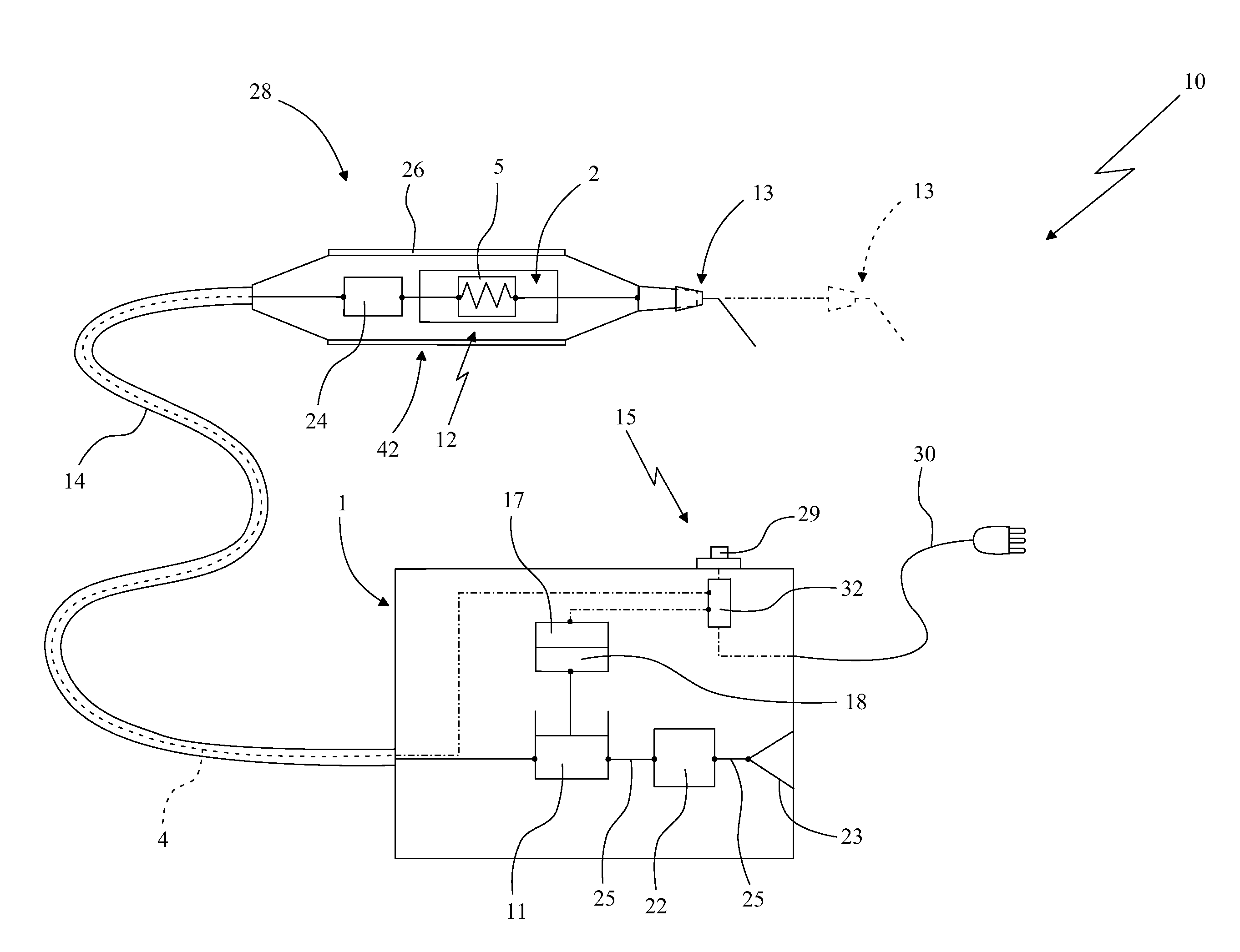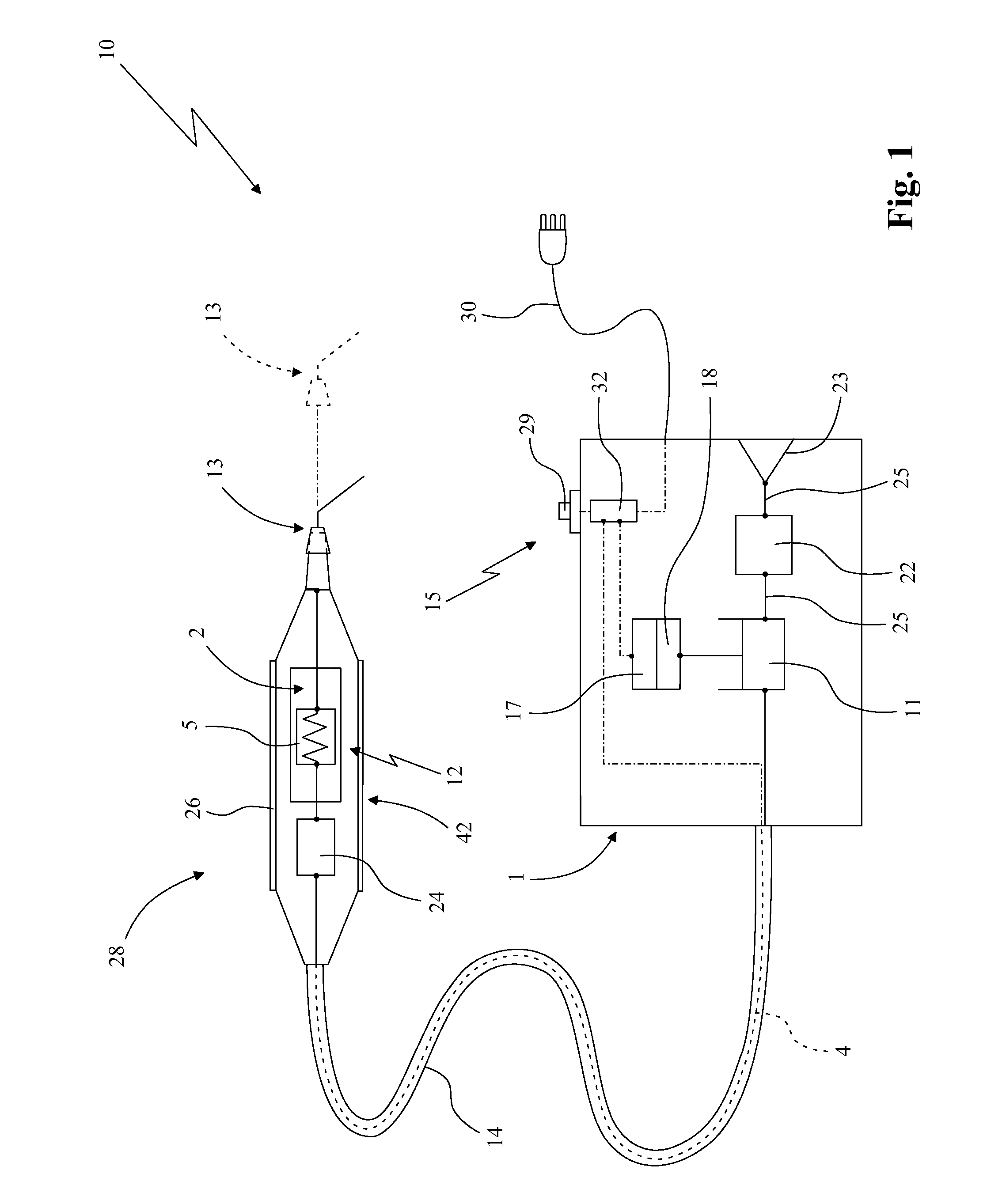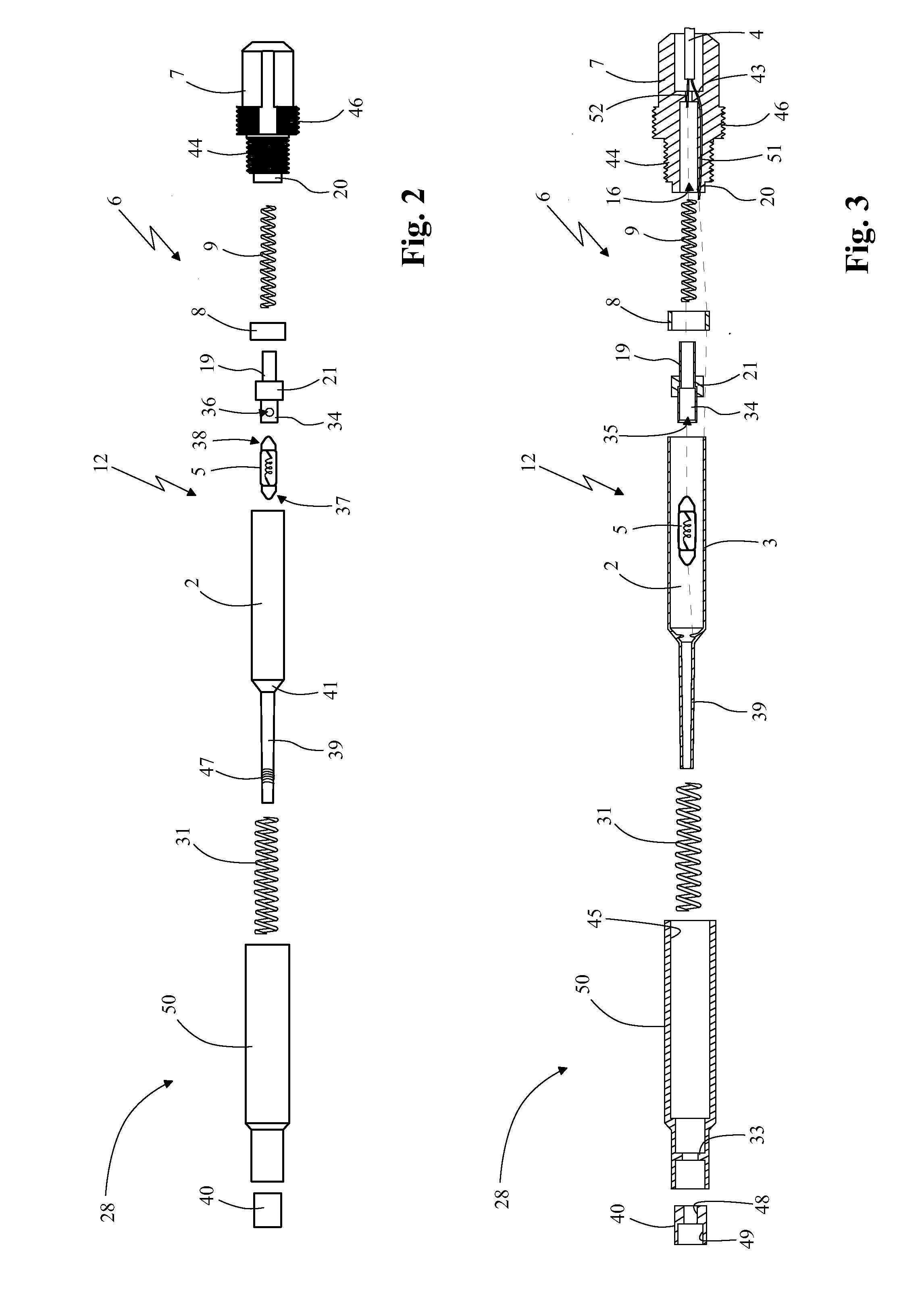Blower for dental use
a technology for dental use and blower, which is applied in the field of blowers for dental use, can solve the problems of slow operation of drying canals, discomfort for patients, and limited drying efficiency of paper cones, and achieve the effect of effectively drying endodontic canals in teeth, convenient use and rapid drying
- Summary
- Abstract
- Description
- Claims
- Application Information
AI Technical Summary
Benefits of technology
Problems solved by technology
Method used
Image
Examples
Embodiment Construction
[0028]In accordance with the figures of the accompanying drawings, 10 denotes in its entirety the blower for dental use according to the present invention. This blower is intended to be used advantageously for drying a pulp canal of a tooth during endodontic surgery.
[0029]In accordance with the accompanying figures, the blower 10 comprises a support structure 1, which is advantageously box-shaped, an air source and a handpiece 28. The latter is connected to a pipe 14 supplying air to be blown in, which is produced by the air source, and a blowing nozzle 13 for the air received from the supply pipe 14. In greater detail, the handpiece 28 has a hollow support body 50 and is connected to the supply pipe 14 by means of a connector 7 which, in accordance with the embodiment shown in FIG. 2, has a first threaded portion 44 designed to engage with a corresponding first portion 45 with matching thread provided on the hollow body 50 of the handpiece 28.
[0030]The connector 7 also has a first ...
PUM
 Login to View More
Login to View More Abstract
Description
Claims
Application Information
 Login to View More
Login to View More - R&D
- Intellectual Property
- Life Sciences
- Materials
- Tech Scout
- Unparalleled Data Quality
- Higher Quality Content
- 60% Fewer Hallucinations
Browse by: Latest US Patents, China's latest patents, Technical Efficacy Thesaurus, Application Domain, Technology Topic, Popular Technical Reports.
© 2025 PatSnap. All rights reserved.Legal|Privacy policy|Modern Slavery Act Transparency Statement|Sitemap|About US| Contact US: help@patsnap.com



